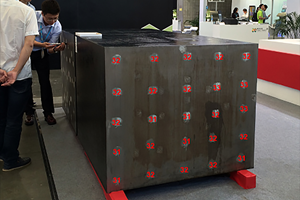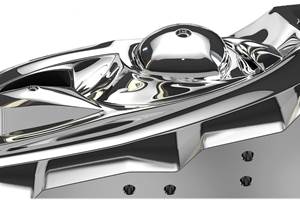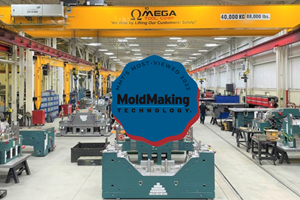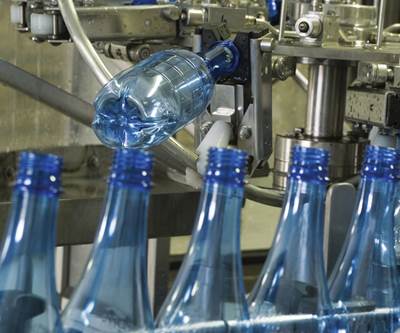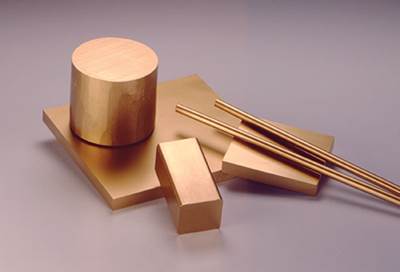Webinar Review: A Look at Copper Alloy Molds
Copper is not strong enough to be used as a mold material, but by alloying copper, it can be made as strong as steel while retaining much of its thermal conductivity. This free webinar explains the various copper alloys used in plastic molding and the strengths and weaknesses of each alloy.
What qualities make a good mold? How does high thermal conductivity aids in productivity? How can I best use a copper alloy and avoid common problems? What are the special fabrication issues when working with copper alloys? These are the questions answered by Materion Performance Alloys and Composites Innovation Pipeline Manager Robert Kusner during the company’s latest webinar on copper alloy molds.
Kusner begins with three basic considerations about mold materials:
(1) Strength. The importance of understanding the strength necessary to withstand molding stresses, measuring hardness or the stress at which the material will deform, tensile strength for ductility to determine mold performance and yield strength.
(2) Machinability. The mold material must be able to be machined using standard tools and equipment.
(3) Thermal conductivity. The mold material must remove heat from the resins.
This moves right into three main reasons for using copper alloys:
(1) Copper mold alloys have 2 to 10 times the conductivity of mold steels.
(2) Uniform cooling allows for the production of precision components that simply could not be made with steel.
(3) Uniform cooling also eliminates condensation from over cooling the mold which leads to better surface finishes and saves energy.
Next is the importance of heat transfer to copper:
(1) Thermal effusivity how well a surface maintains is temperature when it touches another material (instantaneous cooling).
(2) Thermal diffusivity how heat flow through a body and temperature changes; how long does it take heat to move out of the plastic and out of the mold (single cycle cooling).
(3) Thermal conductivity how much heat (long term cooling) How much does a mold heat up after continually removing heat from plastic parts?
In the end, why copper? Well, Kusner says:
- Copper alloys are gall resistant and can be used in moving components.
- Corrosion resistant (but be mindful of the material you are putting the copper in)
- Biocidal (bacteria cannot live on the surface of copper for more than a few minutes)
- Nonmagnetic
- Easily machined
Despite all of copper’s benefits he does share a few caveats:
- More expensive than steel; high acqiustion cost but long term cost is lower.
- Is not as stiff as steel. It has a lower modulus. Bends more easily than steel. Copper will bend a lot further than steel without breaking or deforming.
- It is intrinsically weaker than steel (UTS and yield strength), so it requires elaborate metallurgy or coatings to match steels performance.
- Has a higher thermal expansion than steel (50% higher; must take into account during mold design).
Applications for copper mold alloys include:
- Core/cavities, inserts, injection/blow molds
- Core pins and ejector pins (avoid long cooling time with steel)
- Blow mold pinch offs
- Slides and moving components
- Hot runner nozzles
- Sprue bushings
- Injection press bushings and wear pads
When selecting a copper alloy consider thermal conductivity and Brinell hardness (HB).
Lastly, Kusner highlights a few questions to ask when selecting the right copper alloy (e.g., high hard or low hard copper alloy):
- Is the mold unproductive?
- Does it run hot?
- Does the mold cool unevenly?
- Is mold exposed to high molding stresses?
- Are there material restrictions by specifier?
- Do you have high molding stresses?
- Is a large section thickness required?
- Is a high surface finish required?
For material options and their specifications, visit Materion Performance Alloys. To view the webinar for FREE, click here.
Related Content
Moldmakers Deserve a Total Production Solution
Stability, spindle speed and software are essential consideration for your moldmaking machine tool.
Read MorePre-Hardened Mold Steel Material Increases Through-Hardened Ability
Finkl Steel’s patented pre-hardened mold steel grade MD Xtra material achieves high impact strength, enhanced thermal conductivity and is an exceptional solution for deep impression applications.
Read MoreHow to Achieve the Best Mold Finish
A look at factors that impact the polishability of tool steels and recommendations for obtaining a high-gloss finish.
Read MoreAdvances in P20 Steel Potentially Eliminates Need for Stress Relieving After Rough Cutting
Omega Tool Corp. compares conventional, new P20 grades side by side in production fascia tools, finds no downside.
Read MoreRead Next
Are Copper Beryllium Molds Safe?
One study indicates that there is little risk of transfer of beryllium to the finished molded-plastic product.
Read MoreA Review of Copper Alloys for Plastic Injection Molding
Copper alloys are attractive to the mold industry because of their high thermal conductivity, ease of machining by a variety of processes, and corrosion resistance to water, cooling fluids and the plastics being injected.
Read MoreA New Beryllium Standard
A proposal to set a lower exposure standard for beryllium and beryllium-containing materials will affect how the plastics industry handles and processes these materials.
Read More







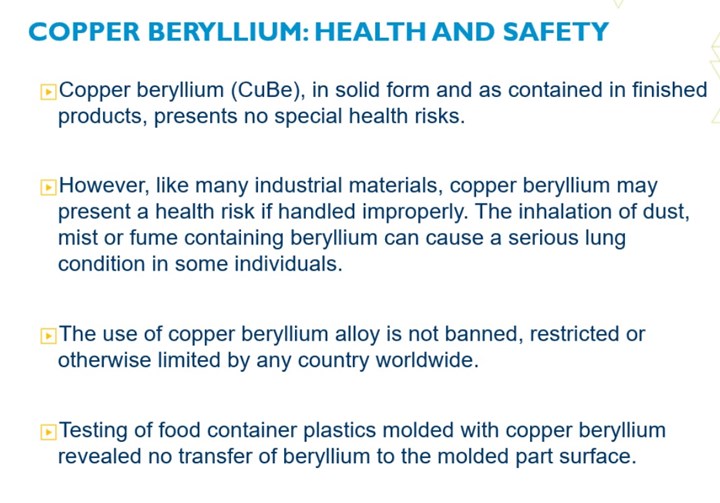
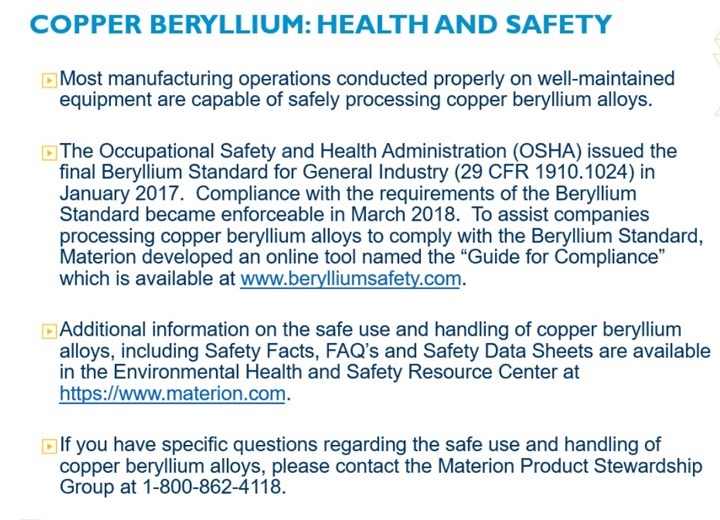

.jpg;maxWidth=300;quality=90)











